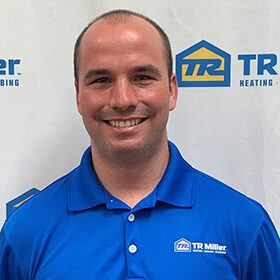An easy way to keep your water heater in prime condition is to periodically flush it. Flushing out the lime and other sediments in the tank will improve the water heater’s lifespan and efficiency. When you neglect to flush the water heater the sediment can accumulate and calcify, which can be hard to remove and may require a new water heater sooner than you had hoped.
Flushing the water heater is a task you can perform on your own. See these 6 steps and decide if this is a DIY project for yourself or if you need to call in the professionals.
1. Turn off the power and cold-water valve.
Turning off the power, if your water tank runs on electricity, is the first step. Shut off the circuit breaker to cut the power. If your water heater runs on gas turn the thermostat and the gas valve off.
In addition to shutting off the power, turn off the valve for the cold water. This valve is located at the top of the water heater. There are two lines, the cold line going in and the hot water coming out. The cold water will have a blue handle, simply shut it off.
2. Allow the water in the tank to cool.
The water in the tank will be very hot, dangerously hot. Do not try to drain the tank while the water is heated up. This can cause serious injury to you. Allow the water heater to cool down for at least one full hour, if your tank is over 36-gallons let it cool for at least 2 hours.
3. Turn on the faucets.
To avoid creating a vacuum while draining the tank, turn on the faucets in several of your sinks in the home. If water should come out during this process it is perfectly normal for this to happen.
4. Hook up the hose.
The garden hose you have on hand will do for this task. Screw the hose onto the drain valve at the bottom of the water heater and place the other end in the floor drain. Or a heat resistant bucket. Make sure to put a straining screen at the end of the hose so that the sediment in the draining water will not clog your floor drain. Be sure to dispose of this sediment outside, not down a household drain.
5. Let the tank drain.
Turn on the water heater’s drain valve and let the water flow out. Allow the water to flow out until it runs completely clear.
6. Finish and start it up.
Once the water comes out clear it’s time to put everything back to normal. Remove the hose, turn off the drain valve, turn the cold-water valve back on, flip the circuit breaker or turn the thermostat back on, and don’t forget to turn off the faucets you turned on in the house.
Need Help?
Not ready to tackle this project on your own, that’s okay! Call the professionals at TR Miller Now and we can help you get the water tank flushed and ready to run a bit longer.

